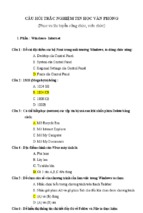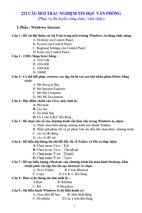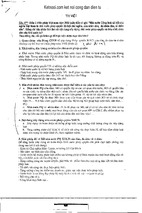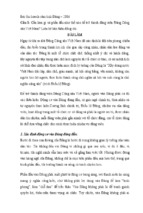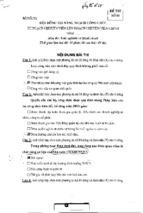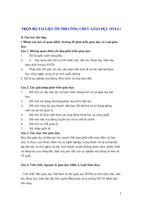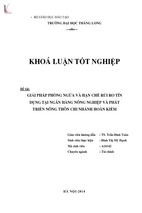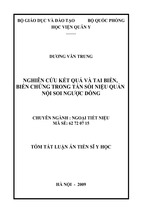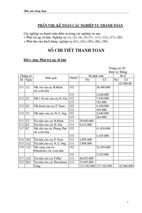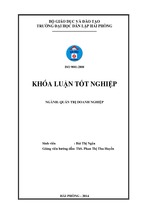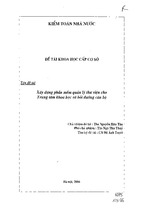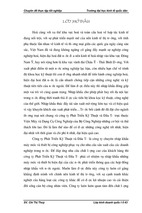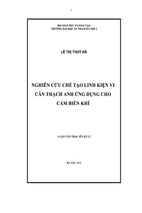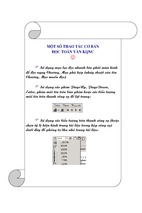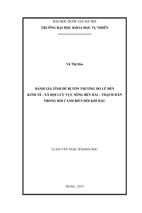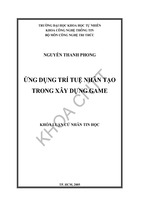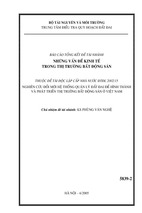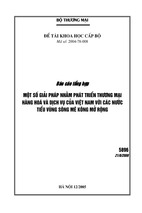INTERNATIONAL
FINANCIAL
STATEMENT
ANALYSIS
CFA Institute is the premier association for investment professionals around the world, with
over 124,000 members in 145 countries. Since 1963 the organization has developed and administered the renowned Chartered Financial Analyst® Program. With a rich history of leading
the investment profession, CFA Institute has set the highest standards in ethics, education, and
professional excellence within the global investment community and is the foremost authority
on investment profession conduct and practice. Each book in the CFA Institute Investment
Series is geared toward industry practitioners along with graduate-level finance students and
covers the most important topics in the industry. The authors of these cutting-edge books are
themselves industry professionals and academics and bring their wealth of knowledge and
expertise to this series.
INTERNATIONAL
FINANCIAL
STATEMENT
ANALYSIS
Third Edition
Thomas R. Robinson, CFA
Elaine Henry, CFA
Wendy L. Pirie, CFA
Michael A. Broihahn, CFA
Cover image: © iStock.com / BreatheFitness
Cover design: Wiley
Copyright © 2015 by CFA Institute. All rights reserved.
Published by John Wiley & Sons, Inc., Hoboken, New Jersey.
The First and Second Editions of this book were published by Wiley in 20XX and 20XX respectively.
Published simultaneously in Canada.
No part of this publication may be reproduced, stored in a retrieval system, or transmitted in any form or by
any means, electronic, mechanical, photocopying, recording, scanning, or otherwise, except as permitted under
Section 107 or 108 of the 1976 United States Copyright Act, without either the prior written permission of the
Publisher, or authorization through payment of the appropriate per-copy fee to the Copyright Clearance Center,
Inc., 222 Rosewood Drive, Danvers, MA 01923, (978) 750-8400, fax (978) 646-8600, or on the Web at www
.copyright.com. Requests to the Publisher for permission should be addressed to the Permissions Department,
John Wiley & Sons, Inc., 111 River Street, Hoboken, NJ 07030, (201) 748-6011, fax (201) 748-6008, or online
at www.wiley.com/go/permissions.
Limit of Liability/Disclaimer of Warranty: While the publisher and author have used their best efforts in preparing
this book, they make no representations or warranties with respect to the accuracy or completeness of the contents
of this book and specifically disclaim any implied warranties of merchantability or fitness for a particular purpose.
No warranty may be created or extended by sales representatives or written sales materials. The advice and strategies
contained herein may not be suitable for your situation. You should consult with a professional where appropriate.
Neither the publisher nor author shall be liable for any loss of profit or any other commercial damages, including
but not limited to special, incidental, consequential, or other damages.
For general information on our other products and services or for technical support, please contact our Customer
Care Department within the United States at (800) 762-2974, outside the United States at (317) 572-3993, or
fax (317) 572-4002.
Wiley publishes in a variety of print and electronic formats and by print-on-demand. Some material included with
standard print versions of this book may not be included in e-books or in print-on-demand. If this book refers to
media such as a CD or DVD that is not included in the version you purchased, you may download this material at
http://booksupport.wiley.com. For more information about Wiley products, visit www.wiley.com.
ISBN 9781118999479 (Hardcover)
ISBN 9781119029748 (ePDF)
ISBN 9781119029755 (ePub)
Printed in the United States of America.
10 9 8 7 6 5 4 3 2 1
CONTENTS
Foreword
xvii
Preface
xix
Acknowledgments
xxi
About the CFA Investment Series
CHAPTER 1
Financial Statement Analysis: An Introduction
Learning Outcomes
1. Introduction
2. Scope of Financial Statement Analysis
3. Major Financial Statements and Other Information Sources
3.1. Financial Statements and Supplementary Information
3.2. Other Sources of Information
4. Financial Statement Analysis Framework
4.1. Articulate the Purpose and Context of Analysis
4.2. Collect Data
4.3. Process Data
4.4. Analyze/Interpret the Processed Data
4.5. Develop and Communicate Conclusions/Recommendations
4.6. Follow-Up
5. Summary
References
Problems
xxiii
1
1
1
2
7
8
27
28
30
30
31
31
32
32
32
34
34
CHAPTER 2
Financial Reporting Mechanics
Learning Outcomes
1. Introduction
2. The Classification of Business Activities
3. Accounts and Financial Statements
37
37
38
38
39
v
vi
Contents
4.
5.
6.
7.
8.
3.1. Financial Statement Elements and Accounts
3.2. Accounting Equations
The Accounting Process
4.1. An Illustration
4.2. The Accounting Records
4.3. Financial Statements
Accruals and Valuation Adjustments
5.1. Accruals
5.2. Valuation Adjustments
Accounting Systems
6.1. Flow of Information in an Accounting System
6.2. Debits and Credits
Using Financial Statements in Security Analysis
7.1. The Use of Judgment in Accounts and Entries
7.2. Misrepresentations
Summary
Appendix: A Debit/Credit Accounting System
Problems
40
42
47
47
49
62
65
65
67
67
68
69
69
69
70
71
71
87
CHAPTER 3
Financial Reporting Standards
Learning Outcomes
1. Introduction
2. The Objective of Financial Reporting
3. Standard-Setting Bodies and Regulatory Authorities
3.1. Accounting Standards Boards
3.2. Regulatory Authorities
4. Convergence of Global Financial Reporting Standards
5. The International Financial Reporting Standards Framework
5.1. Objective of Financial Reports
5.2. Qualitative Characteristics of Financial Reports
5.3. Constraints on Financial Reports
5.4. The Elements of Financial Statements
5.5. General Requirements for Financial Statements
5.6. Convergence of Conceptual Framework
6. Effective Financial Reporting
6.1. Characteristics of an Effective Financial Reporting
Framework
6.2. Barriers to a Single Coherent Framework
7. Comparison of IFRS with Alternative Reporting Systems
8. Monitoring Developments in Financial Reporting Standards
8.1. New Products or Types of Transactions
8.2. Evolving Standards and the Role of CFA Institute
8.3. Company Disclosures
9. Summary
Problems
91
91
92
92
95
96
99
104
107
109
109
110
112
114
118
119
119
120
121
123
123
124
125
128
130
Contents
vii
CHAPTER 4
Understanding Income Statements
Learning Outcomes
1. Introduction
2. Components and Format of the Income Statement
3. Revenue Recognition
3.1. General Principles
3.2. Revenue Recognition in Special Cases
3.3. Implications for Financial Analysis
4. Expense Recognition
4.1. General Principles
4.2. Issues in Expense Recognition
4.3. Implications for Financial Analysis
5. Non-Recurring Items and Non-Operating Items
5.1. Discontinued Operations
5.2. Extraordinary Items
5.3. Unusual or Infrequent Items
5.4. Changes in Accounting Policies
5.5. Non-Operating Items
6. Earnings per Share
6.1. Simple versus Complex Capital Structure
6.2. Basic EPS
6.3. Diluted EPS
6.4. Changes in EPS
7. Analysis of the Income Statement
7.1. Common-Size Analysis of the Income Statement
7.2. Income Statement Ratios
8. Comprehensive Income
9. Summary
Problems
133
133
134
135
139
140
143
150
152
152
156
161
162
163
163
164
165
168
169
169
170
171
178
178
178
181
183
186
188
CHAPTER 5
Understanding Balance Sheets
Learning Outcomes
1. Introduction
2. Components and Format of the Balance Sheet
2.1. Balance Sheet Components
2.2. Current and Non-Current Classification
2.3. Liquidity-Based Presentation
3. Current Assets and Current Liabilities
3.1. Current Assets
3.2. Current Liabilities
4. Non-Current Assets
4.1. Property, Plant, and Equipment
4.2. Investment Property
4.3. Intangible Assets
193
193
193
194
195
197
198
199
199
206
209
211
212
212
viii
Contents
5.
6.
7.
8.
4.4. Goodwill
4.5. Financial Assets
Non-Current Liabilities
5.1. Long-term Financial Liabilities
5.2. Deferred Tax Liabilities
Equity
6.1. Components of Equity
6.2. Statement of Changes in Equity
Analysis of the Balance Sheet
7.1. Common-Size Analysis of the Balance Sheet
7.2. Balance Sheet Ratios
Summary
Problems
215
217
220
222
222
223
223
225
227
227
235
237
239
CHAPTER 6
Understanding Cash Flow Statements
Learning Outcomes
1. Introduction
2. Components and Format of the Cash Flow Statement
2.1. Classification of Cash Flows and Non-Cash Activities
2.2. A Summary of Differences between IFRS and US GAAP
2.3. Direct and Indirect Methods for Reporting Cash Flow from
Operating Activities
3. The Cash Flow Statement: Linkages and Preparation
3.1. Linkages of the Cash Flow Statement with the Income Statement
and Balance Sheet
3.2. Steps in Preparing the Cash Flow Statement
3.3. Conversion of Cash Flows from the Indirect to the Direct Method
4. Cash Flow Statement Analysis
4.1. Evaluation of the Sources and Uses of Cash
4.2. Common-Size Analysis of the Statement of Cash Flows
4.3. Free Cash Flow to the Firm and Free Cash Flow to Equity
4.4. Cash Flow Ratios
5. Summary
Reference
Problems
243
243
243
244
245
247
248
258
258
260
272
273
274
277
282
283
285
286
286
CHAPTER 7
Financial Analysis Techniques
Learning Outcomes
1. Introduction
2. The Financial Analysis Process
2.1. The Objectives of the Financial Analysis Process
2.2. Distinguishing between Computations and Analysis
3. Analytical Tools and Techniques
291
291
291
292
293
294
296
Contents
4.
5.
6.
7.
8.
9.
3.1. Ratios
3.2. Common-Size Analysis
3.3. The Use of Graphs as an Analytical Tool
3.4. Regression Analysis
Common Ratios Used in Financial Analysis
4.1. Interpretation and Context
4.2. Activity Ratios
4.3. Liquidity Ratios
4.4. Solvency Ratios
4.5. Profitability Ratios
4.6. Integrated Financial Ratio Analysis
Equity Analysis
5.1. Valuation Ratios
5.2. Industry-Specific Ratios
5.3. Research on Ratios in Equity Analysis
Credit Analysis
6.1. The Credit Rating Process
6.2. Research on Ratios in Credit Analysis
Business and Geographic Segments
7.1. Segment Reporting Requirements
7.2. Segment Ratios
Model Building and Forecasting
Summary
References
Problems
ix
300
304
311
312
313
313
314
320
325
329
333
341
341
344
346
347
347
349
350
350
351
353
353
354
355
CHAPTER 8
Inventories
Learning Outcomes
1. Introduction
2. Cost of Inventories
3. Inventory Valuation Methods
3.1. Specific Identification
3.2. First-In, First-Out (FIFO)
3.3. Weighted Average Cost
3.4. Last-In, First-Out (LIFO)
3.5. Calculation of Cost of Sales, Gross Profit, and Ending Inventory
3.6. Periodic versus Perpetual Inventory Systems
3.7. Comparison of Inventory Valuation Methods
4. The LIFO Method
4.1. LIFO Reserve
4.2. LIFO Liquidations
5. Inventory Method Changes
6. Inventory Adjustments
7. Evaluation of Inventory Management
7.1. Presentation and Disclosure
7.2. Inventory Ratios
363
363
363
365
366
367
367
367
368
368
370
373
375
375
382
386
386
393
394
394
x
Contents
7.3. Financial Analysis Illustrations
8. Summary
Problems
395
406
408
CHAPTER 9
Long-Lived Assets
421
Learning Outcomes
421
1. Introduction
422
2. Acquisition of Long-Lived Assets
423
2.1. Property, Plant, and Equipment
423
2.2. Intangible Assets
426
2.3. Capitalizing versus Expensing—Impact on Financial Statements and Ratios 429
2.4. Capitalization of Interest Costs
434
2.5. Capitalization of Internal Development Costs
437
3. Depreciation and Amortization of Long-Lived Assets
440
3.1. Depreciation Methods and Calculation of Depreciation Expense
441
3.2. Amortization Methods and Calculation of Amortization Expense
449
4. The Revaluation Model
450
5. Impairment of Assets
453
5.1. Impairment of Property, Plant, and Equipment
454
5.2. Impairment of Intangible Assets with a Finite Life
455
5.3. Impairment of Intangibles with Indefinite Lives
455
5.4. Impairment of Long-Lived Assets Held for Sale
455
5.5. Reversals of Impairments of Long-Lived Assets
455
6. Derecognition
456
6.1. Sale of Long-Lived Assets
456
6.2. Long-Lived Assets Disposed of Other Than by a Sale
457
7. Presentation and Disclosures
458
8. Investment Property
469
9. Leasing
471
9.1. The Lease versus Buy Decision
472
9.2. Finance versus Operating Leases
472
10. Summary
493
Problems
495
CHAPTER 10
Non-Current (Long-Term) Liabilities
Learning Outcomes
1. Introduction
2. Bonds Payable
2.1. Accounting for Bond Issuance
2.2. Accounting for Bond Amortisation, Interest Expense,
and Interest Payments
2.3. Current Market Rates and Fair Value Reporting Option
2.4. Derecognition of Debt
505
505
506
506
506
510
515
517
Contents
3.
4.
5.
6.
2.5. Debt Covenants
2.6. Presentation and Disclosure of Long-Term Debt
Leases
3.1. Advantages of Leasing
3.2. Finance (or Capital) Leases versus Operating Leases
Introduction to Pensions and Other Post-Employment Benefits
Evaluating Solvency: Leverage and Coverage Ratios
Summary
Problems
xi
520
522
525
526
526
544
547
551
552
CHAPTER 11
Financial Reporting Quality
Learning Outcomes
1. Introduction
2. Conceptual Overview
2.1. GAAP, Decision-Useful, Sustainable, and Adequate Returns
2.2. GAAP, Decision-Useful, but Sustainable?
2.3. Biased Accounting Choices
2.4. Departures from GAAP
2.5. Differentiate between Conservative and Aggressive Accounting
3. Context for Assessing Financial Reporting Quality
3.1. Motivations
3.2. Conditions Conducive to Issuing Low-Quality Financial Reports
3.3. Mechanisms That Discipline Financial Reporting Quality
4. Detection of Financial Reporting Quality Issues
4.1. Presentation Choices
4.2. Accounting Choices and Estimates
4.3. Warning Signs
5. Summary
References
Problems
555
555
556
557
558
559
560
567
569
573
573
574
575
581
581
586
603
609
610
611
CHAPTER 12
Financial Statement Analysis: Applications
Learning Outcomes
1. Introduction
2. Application: Evaluating Past Financial Performance
3. Application: Projecting Future Financial Performance
3.1. Projecting Performance: An Input to Market-Based Valuation
3.2. Projecting Multiple-Period Performance
4. Application: Assessing Credit Risk
5. Application: Screening for Potential Equity Investments
6. Analyst Adjustments to Reported Financials
6.1. A Framework for Analyst Adjustments
6.2. Analyst Adjustments Related to Investments
613
613
614
614
623
624
629
633
637
640
640
641
xii
Contents
6.3. Analyst Adjustments Related to Inventory
6.4. Analyst Adjustments Related to Property, Plant, and Equipment
6.5. Analyst Adjustments Related to Goodwill
6.6. Analyst Adjustments Related to Off-Balance-Sheet Financing
7. Summary
References
Problems
641
645
646
649
656
656
657
CHAPTER 13
Income Taxes
Learning Outcomes
1. Introduction
2. Differences between Accounting Profit and Taxable Income
2.1. Current Tax Assets and Liabilities
2.2. Deferred Tax Assets and Liabilities
3. Determining the Tax Base of Assets and Liabilities
3.1. Determining the Tax Base of an Asset
3.2. Determining the Tax Base of a Liability
3.3. Changes in Income Tax Rates
4. Temporary and Permanent Differences between Taxable and
Accounting Profit
4.1. Taxable Temporary Differences
4.2. Deductible Temporary Differences
4.3. Examples of Taxable and Deductible Temporary Differences
4.4. Temporary Differences at Initial Recognition of Assets and
Liabilities
4.5. Business Combinations and Deferred Taxes
4.6. Investments in Subsidiaries, Branches, Associates and Interests
in Joint Ventures
5. Unused Tax Losses and Tax Credits
6. Recognition and Measurement of Current and Deferred Tax
6.1. Recognition of a Valuation Allowance
6.2. Recognition of Current and Deferred Tax Charged Directly to Equity
7. Presentation and Disclosure
8. Comparison of IFRS and US GAAP
9. Summary
Problems
661
661
662
662
663
664
667
668
669
671
672
673
673
674
676
677
677
677
678
679
679
682
687
690
691
CHAPTER 14
Employee Compensation: Post-Employment and Share-Based
Learning Outcomes
1. Introduction
2. Pensions and Other Post-Employment Benefits
2.1. Types of Post-Employment Benefit Plans
2.2. Measuring a Defined Benefit Pension Plan’s Obligations
697
697
697
698
698
701
Contents
Financial Statement Reporting of Pension Plans and Other
Post-Employment Benefits
2.4. Disclosures of Pension and Other Post-Employment Benefits
3. Share-Based Compensation
3.1. Stock Grants
3.2. Stock Options
3.3. Other Types of Share-Based Compensation
4. Summary
Reference
Problems
xiii
2.3.
702
715
726
728
729
732
732
733
733
CHAPTER 15
Intercorporate Investments
Learning Outcomes
1. Introduction
2. Basic Corporate Investment Categories
3. Investments in Financial Assets: Standard IAS 39
(as of December 2012)
3.1. Held-to-Maturity
3.2. Fair Value through Profit or Loss
3.3. Available-for-Sale
3.4. Loans and Receivables
3.5. Reclassification of Investments
3.6. Impairments
4. Investments in Financial Assets: IFRS 9
(as of December 2012)
4.1. Classification and Measurement
4.2. Reclassification of Investments
5. Investments in Associates and Joint Ventures
5.1. Equity Method of Accounting: Basic Principles
5.2. Investment Costs That Exceed the Book Value of the Investee
5.3. Amortization of Excess Purchase Price
5.4. Fair Value Option
5.5. Impairment
5.6. Transactions with Associates
5.7. Disclosure
5.8. Issues for Analysts
6. Business Combinations
6.1. Pooling of Interests and Purchase Methods
6.2. Acquisition Method
6.3. Impact of the Acquisition Method on Financial Statements,
Post-Acquisition
6.4. The Consolidation Process
6.5. Financial Statement Presentation Subsequent to the
Business Combination
6.6. Variable Interest and Special Purpose Entities
739
739
739
741
742
743
743
744
745
746
747
752
752
754
755
756
759
761
763
763
764
766
767
767
769
770
772
775
781
784
xiv
Contents
6.7.
Additional Issues in Business Combinations That
Impair Comparability
7. Summary
Problems
788
789
790
CHAPTER 16
Multinational Operations
Learning Outcomes
1. Introduction
2. Foreign Currency Transactions
2.1. Foreign Currency Transaction Exposure to Foreign Exchange Risk
2.2. Analytical Issues
2.3. Disclosures Related to Foreign Currency Transaction Gains and Losses
3. Translation of Foreign Currency Financial Statements
3.1. Translation Conceptual Issues
3.2. Translation Methods
3.3. Illustration of Translation Methods (Excluding Hyperinflationary
Economies)
3.4. Translation Analytical Issues
3.5. Translation when a Foreign Subsidiary Operates in a Hyperinflationary
Economy
3.6. Companies Use Both Translation Methods at the Same Time
3.7. Disclosures Related to Translation Methods
4. Multinational Operations and a Company’s Effective Tax Rate
5. Additional Disclosures on the Effects of Foreign Currency
5.1. Disclosures Related to Sales Growth
5.2. Disclosures Related to Major Sources of Foreign Exchange Risk
6. Summary
Problems
799
799
800
801
802
805
808
814
814
819
827
830
842
846
847
853
856
856
859
860
862
CHAPTER 17
Evaluating Quality of Financial Reports
Learning Outcomes
1. Introduction
2. Quality of Financial Reports
2.1. Conceptual Framework for Assessing the Quality of
Financial Reports
2.2. Potential Problems That Affect the Quality of Financial Reports
3. Evaluating the Quality of Financial Reports
3.1. General Steps to Evaluate the Quality of Financial Reports
3.2. Quantitative Tools to Assess the Likelihood of Misreporting
4. Earnings Quality
4.1. Indicators of Earnings Quality
4.2. Evaluating the Earnings Quality of a Company (Cases)
4.3. Bankruptcy Prediction Models
869
869
869
871
871
873
884
885
886
889
889
899
910
Contents
5. Cash Flow Quality
5.1. Indicators of Cash Flow Quality
5.2. Evaluating Cash Flow Quality
6. Balance Sheet Quality
7. Sources of Information about Risk
7.1. Limited Usefulness of Auditor’s Opinion as a Source of
Information about Risk
7.2. Risk-Related Disclosures in the Notes
7.3. Management Commentary (Management Discussion
and Analysis, or MD&A)
7.4. Other Required Disclosures
7.5. Financial Press as a Source of Information about Risk
8. Summary
References
Problems
xv
911
912
913
921
925
925
929
933
936
937
937
939
940
CHAPTER 18
Integration of Financial Statement Analysis Techniques
Learning Outcomes
1. Introduction
2. Case Study 1: Long-Term Equity Investment
2.1. Phase 1: Define a Purpose for the Analysis
2.2. Phase 2: Collect Input Data
2.3. Phase 3: Process Data/Phase 4: Analyze/Interpret the
Processed Data
2.4. Phase 5: Develop and Communicate Conclusions and
Recommendations (e.g., with an Analysis Report)
2.5. Phase 6: Follow-up
3. Case Study 2: Off-Balance Sheet Leverage from Operating Leases
3.1. Phase 1: Define a Purpose for the Analysis
3.2. Phase 2: Collect Input Data
3.3. Phase 3: Process Data/Phase 4: Analyze/Interpret the
Processed Data
3.4. Phase 5: Develop and Communicate Conclusions and
Recommendations (e.g., with an Analysis Report)
3.5. Phase 6: Follow-up
4. Case Study 3: Anticipating Effects of Changes in Accounting Standards
4.1. Phase 1: Define a Purpose for the Analysis
4.2. Phase 2: Collect Input Data
4.3. Phase 3: Process Data/Phase 4: Analyze/Interpret the
Processed Data
4.4. Phase 5: Develop and Communicate Conclusions and
Recommendations (e.g., with an Analysis Report)
4.5. Phase 6: Follow-up
5. Summary
Problems
943
943
944
945
945
945
946
971
972
972
973
973
973
975
976
976
977
977
977
980
980
980
981
xvi
Contents
Glossary
987
About the Authors
999
About the CFA Program
1003
Index
1005
FOREWORD
The stated objective of the International Accounting Standards Board (IASB) is to produce
accounting standards that are principle-based, internally consistent, and internationally converged. The resulting financial statements should provide a framework that gives capital market
participants the tools to make rational and intelligent decisions. The role of the analyst as an
interpreter of the numbers that appear in the financial statements is critical in this process.
Making valuation estimates and the accompanying decisions in an international context
is, in principle, no different from a purely domestic one. In both cases, the financial reporting
model is the primary source of the information required. Recommendations and decisions
have to be made based on careful analysis. The learning outcomes and techniques described in
this volume are designed to enable the analyst to do just that.
Collecting and analyzing data is the core analytical function, but communication is also
critical. The best and most rigorous analysis has to be supplemented by an understanding of
how investment decisions are made, or it will fail its purpose. It must be communicated to
the intended recipient in a way that explains the logic behind the valuation estimate or recommendation and promotes understanding and action. Communication skills, in addition to
analytical methods, are discussed in the readings.
The readings also point to the necessity of exercising judgment as part of the analytical process. This is particularly important in the context of International Financial
Reporting Standards (IFRS). As noted, an important element of IFRS is that the standards
are principle-based and not unduly prescriptive (as some perceive US Generally Accepted
Accounting Principles to be). The objective is to allow a degree of flexibility that permits
company management to present corporate results in the most meaningful way, while preserving the spirit intended—substance over form. However, this presents the analyst with an
additional challenge in interpreting the published figures and comparing them with those of
other entities.
CFA Institute and its members have long supported the development of a global set of accounting standards; the benefits, in terms of improved comparability for investors and lowered
cost of capital for corporations, are evident. IFRS are now accepted or required, in whole or in
part, in some 100 or more jurisdictions around the world. (So far, in the United States, only
a few foreign registrants with the SEC are permitted to use the Standards.) Achieving comparability between companies reporting in Tokyo, Toronto, or Turin would seem to meet the
cherished goal of a global financial reporting system. But a word of caution is warranted. Few
countries want to give up sovereignty to an independent authority based in London, no matter
how high the quality of the output may be. Standard setting is ultimately a political process,
and powerful constituencies abound that have objectives that may differ from the provision of
decision-useful information for investors. And in order to become law in many jurisdictions,
some sort of endorsement mechanism has to be established. Endorsements can, in some cases,
exclude provisions in standards, or offer exceptions or options not present in the original text.
The result can be deviations from the published standards. While there may be one language,
xvii
xviii
Foreword
various dialects can emerge, and the analyst must be vigilant to discern these differences, and
their significance.
Addendum: 30 September 2014
Regrettably, Tony Cope, author of the preceding foreword, passed away in November 2013.
As we prepare for the third edition and review his foreword to the second edition of the book,
we cannot help but note how well his comments stand the test of time.
Tony was on the forefront of advocating for convergence in international accounting
standards and for assuring consistency and transparency in how company performance is reported. Tony was a member of the US Financial Accounting Standards Board from 1993 to
2001. After playing a leading role in the Strategy Working Party that led to the creation of the
International Accounting Standards Board (IASB) in 2001, Tony served as a member of the
IASB from 2001 through 2007.
Tony made substantial, long-lasting contributions to the quality of global financial reporting. More than that, he was a friendly, caring person and is deeply missed by his many friends
and colleagues.
Sandra Peters, CFA
11 November 2014
- Xem thêm -

